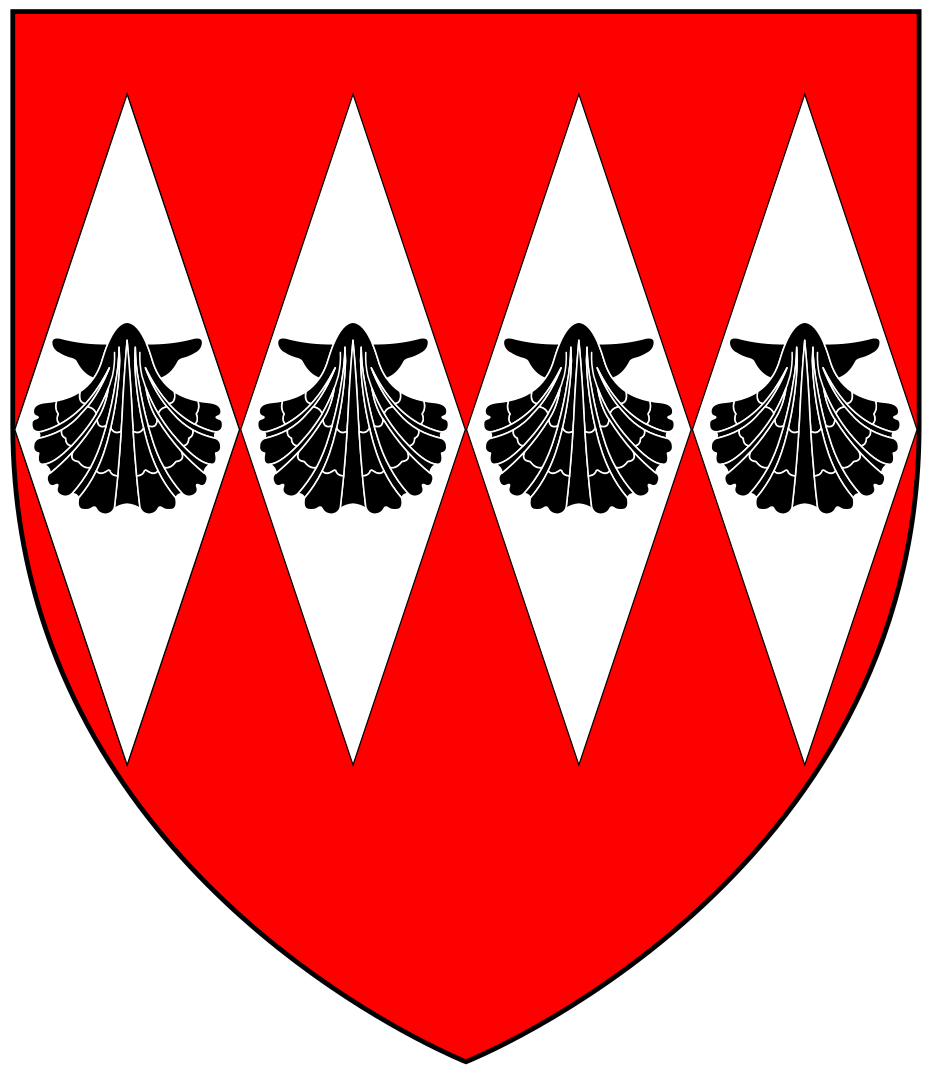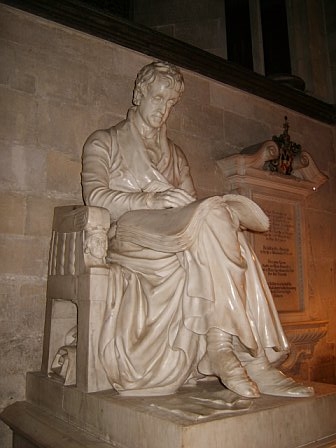|
Ralph Cheyne
Sir Ralph Cheyne (c. 1337 – 1400) (''alias'' Cheney), of Brooke, in the parish of Westbury in Wiltshire, was three times a Member of Parliament for Wiltshire and was Deputy Justiciar of Ireland in 1373 and Lord Chancellor of Ireland 1383–4. He was Deputy Warden of the Cinque Ports. Origins He was the second son and eventual heir of Sir William Cheyne (died 1345) lord of the manor of Poyntington in Somerset by his second wife Joan Gorges, a daughter of Ralph Gorges of Bradpole in Dorset. His elder half-brother was Sir Edmund Cheyne (died 1374/83), Warden of the Channel Islands, who married a certain Katherine (died 1422) but died without children and whose estates Ralph eventually inherited. Katherine remarried to Sir John Strecch (died 1391) of Wambrook in Somerset. Her ledger stone, with a much-worn black-letter Gothic inscription describing her as "Lady of Poyntington" ("Kath rna St echi d mia de Pountyngton") survives in Poyntington Church, reset in the south-west wal ... [...More Info...] [...Related Items...] OR: [Wikipedia] [Google] [Baidu] |
Ledger Stone
A ledger stone or ledgerstone is an inscribed stone slab usually laid into the floor of a church to commemorate or mark the place of the burial of an important deceased person. The term "ledger" derives from the Middle English words ''lygger'', ''ligger'' or ''leger'', themselves derived from the root of the Old English verb ''liċġan'', meaning to lie (down). Ledger stones may also be found as slabs forming the tops of tomb chest monuments. Form and geology Ledger stones take the form of an inscribed stone slab, usually laid into the floor of a church to commemorate or mark the place of the burial of an important deceased person. Ledger stones may also be found as slabs forming the tops of chest tombs. An inscription is usually incised into the stone within a ledger line running around the edge of the stone. Such inscription may continue within the central area of the stone, which may be decorated with relief-sculpted or incised coats of arms, or other appropriate decorative ite ... [...More Info...] [...Related Items...] OR: [Wikipedia] [Google] [Baidu] |
Dorset (UK Parliament Constituency)
Dorset was a county constituency covering Dorset in southern England, which elected two Members of Parliament (MPs), traditionally known as knights of the shire, to the House of Commons of England from 1290 until 1707, to the House of Commons of Great Britain from 1707 to 1800, and to the House of Commons of the United Kingdom until 1832. The Great Reform Act increased its representation to three MPs with effect from the 1832 general election, and under the Redistribution of Seats Act 1885 the constituency was abolished for the 1885 election, and replaced by four single-member divisions: North Dorset, South Dorset, East Dorset and West Dorset. When elections were contested, the bloc vote system was used, but contests were rare. Even after the 1832 Reforms, only three of the nineteen elections before 1885 were contested; in the others, the nominated candidates were returned without a vote. Members of Parliament Before 1640 MPs 1640–1832 MPs 1832–1885 Electi ... [...More Info...] [...Related Items...] OR: [Wikipedia] [Google] [Baidu] |
Brook, Heywood
Brook in the parish of Heywood, north of Westbury in Wiltshire, England, is an historic estate. It was the seat of Robert Willoughby, 1st Baron Willoughby de Broke (c. 1452 – 1502), KG, an important supporter of King Henry VII, whose title unusually incorporates the name of his seat, in order to differentiate him from his ancestors Barons Willoughby of Eresby, seated at Eresby Manor near Spilsby in Lincolnshire. A medieval wing survives of the mansion house known as Brook Hall, a Grade I listed building which stands near the Biss Brook. History The estate was held by Stanley Abbey from the 13th century until the Dissolution. It formed part of Westbury parish until 1896, when Heywood civil parish was created from the northern part of Westbury. Descent Paveley The earliest recorded holder is the Paveley family, which held it in the reign of King Henry I (1100–1135). Rogers gives the descent of Brook as follows: *Reginald de Paveley, lord of the manor of Westbury *W ... [...More Info...] [...Related Items...] OR: [Wikipedia] [Google] [Baidu] |
High Sheriff Of Wiltshire
This is a list of the Sheriffs and (after 1 April 1974) High Sheriffs of Wiltshire. Until the 14th century, the shrievalty was held ''ex officio'' by the castellans of Old Sarum Castle. On 1 April 1974, under the provisions of the Local Government Act 1972, the title of Sheriff of Wiltshire was retitled as High Sheriff of Wiltshire.Local Government Act 1972: Section 219 at legislation.gov.uk, accessed 28 April 2020: ”Sheriffs appointed for a county or Greater London shall be known as high sheriffs, and any reference in any enactment or instrument to a sheriff shall be construed accordingly in relation to sheriffs for a county or Greater London". Sheriff To 1400 *1066: Edric *1067–1070: Philippe de Buckland *1085: Aiulphus the Sheriff *1070–1105: < ...[...More Info...] [...Related Items...] OR: [Wikipedia] [Google] [Baidu] |
Lord Chief Justice Of Ireland
The Court of King's Bench (or Court of Queen's Bench during the reign of a Queen) was one of the senior courts of common law in Ireland. It was a mirror of the Court of King's Bench in England. The Lord Chief Justice was the most senior judge in the court, and the second most senior Irish judge under English rule and later when Ireland became part of the United Kingdom. Additionally, for a brief period between 1922 and 1924, the Lord Chief Justice of Ireland was the most senior judge in the Irish Free State. History of the position The office was created during the Lordship of Ireland (1171–1536) and continued in existence under the Kingdom of Ireland (1536–1800) and the United Kingdom of Great Britain and Ireland. Prior to the Supreme Court of Judicature Act (Ireland) 1877, the Lord Chief Justice presided over the Court of King's/Queen's Bench, and as such ranked foremost amongst the judges sitting at common law. After 1877, the Lord Chief Justice assumed the presidency of ... [...More Info...] [...Related Items...] OR: [Wikipedia] [Google] [Baidu] |
Robert De Ashton
Sir Robert de Ashton, also called "Robert Assheton" or "Robert de Assheton" (died 1385), was a civil, military, and naval officer under Edward III of England who achieved distinction alike in court and camp, by land and by sea. Family Ashton was of the great northern family of Ashton or Assheton, of Ashton-under-Lyne, Lancashire. Robert was also twice-married. By his first wife, Elizabeth de Gorges, Heiress of Tothill, he left a son, Thomas, and a daughter, Eleanor. His second wife was the widow of Lord Matthew de Gomey, and after Ashton's death married Sir John Tiptoft, knt., and died in 1417. Career Sir Robert is first mentioned in 1324, as a member of the parliament of Westminster, and afterwards occupying positions of great importance and trust. In 1359, he was governor of ' Guynes' near Calais; in 1362 he was Lord Treasurer of England; in 1368 he had the custody of the castle of Sandgate near Calais with the lands and revenue thereto belonging; in 1369 he was admiral ... [...More Info...] [...Related Items...] OR: [Wikipedia] [Google] [Baidu] |
Ireland
Ireland ( ; ga, Éire ; Ulster Scots dialect, Ulster-Scots: ) is an island in the Atlantic Ocean, North Atlantic Ocean, in Northwestern Europe, north-western Europe. It is separated from Great Britain to its east by the North Channel (Great Britain and Ireland), North Channel, the Irish Sea, and St George's Channel. Ireland is the List of islands of the British Isles, second-largest island of the British Isles, the List of European islands by area, third-largest in Europe, and the List of islands by area, twentieth-largest on Earth. Geopolitically, Ireland is divided between the Republic of Ireland (officially Names of the Irish state, named Ireland), which covers five-sixths of the island, and Northern Ireland, which is part of the United Kingdom. As of 2022, the Irish population analysis, population of the entire island is just over 7 million, with 5.1 million living in the Republic of Ireland and 1.9 million in Northern Ireland, ranking it the List of European islan ... [...More Info...] [...Related Items...] OR: [Wikipedia] [Google] [Baidu] |
Richard I Of England
Richard I (8 September 1157 – 6 April 1199) was King of England from 1189 until his death in 1199. He also ruled as Duke of Normandy, Aquitaine and Gascony, Lord of Cyprus, and Count of Poitiers, Anjou, Maine, and Nantes, and was overlord of Brittany at various times during the same period. He was the third of five sons of King Henry II of England and Eleanor of Aquitaine and seemed unlikely to become king, but all his brothers except the youngest, John, predeceased their father. Richard is known as Richard Cœur de Lion ( Norman French: ''Le quor de lion'') or Richard the Lionheart because of his reputation as a great military leader and warrior. The troubadour Bertran de Born also called him Richard Oc-e-Non (Occitan for ''Yes and No''), possibly from a reputation for terseness. By the age of 16, Richard had taken command of his own army, putting down rebellions in Poitou against his father. Richard was an important Christian commander during the Third Crusade, ... [...More Info...] [...Related Items...] OR: [Wikipedia] [Google] [Baidu] |
Crusade
The Crusades were a series of religious wars initiated, supported, and sometimes directed by the Latin Church in the medieval period. The best known of these Crusades are those to the Holy Land in the period between 1095 and 1291 that were intended to recover Jerusalem and its surrounding area from Islamic rule. Beginning with the First Crusade, which resulted in the recovery of Jerusalem in 1099, dozens of Crusades were fought, providing a focal point of European history for centuries. In 1095, Pope Urban II proclaimed the First Crusade at the Council of Clermont. He encouraged military support for Byzantine emperor AlexiosI against the Seljuk Turks and called for an armed pilgrimage to Jerusalem. Across all social strata in western Europe, there was an enthusiastic response. The first Crusaders had a variety of motivations, including religious salvation, satisfying feudal obligations, opportunities for renown, and economic or political advantage. Later crusades were cond ... [...More Info...] [...Related Items...] OR: [Wikipedia] [Google] [Baidu] |





